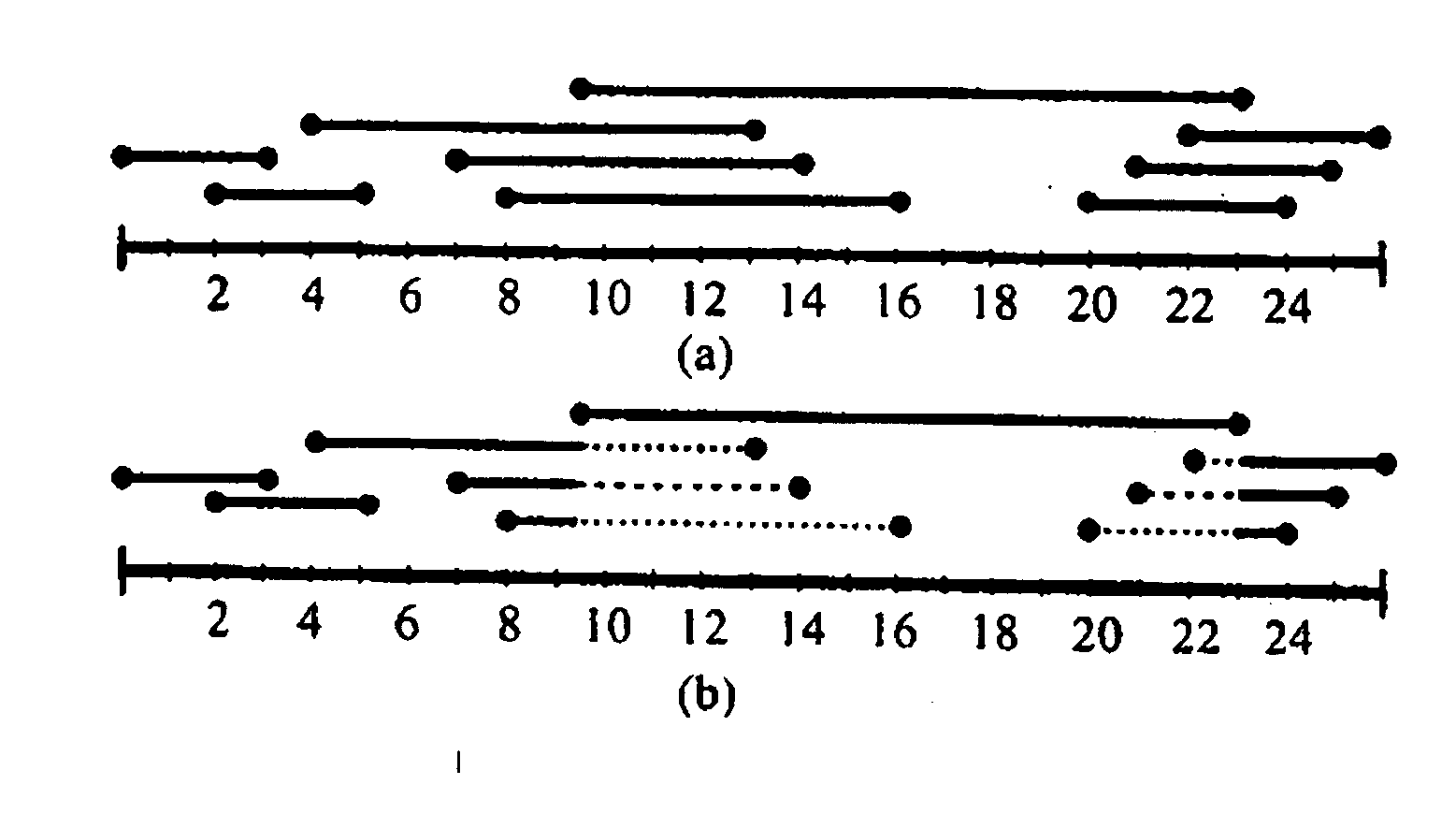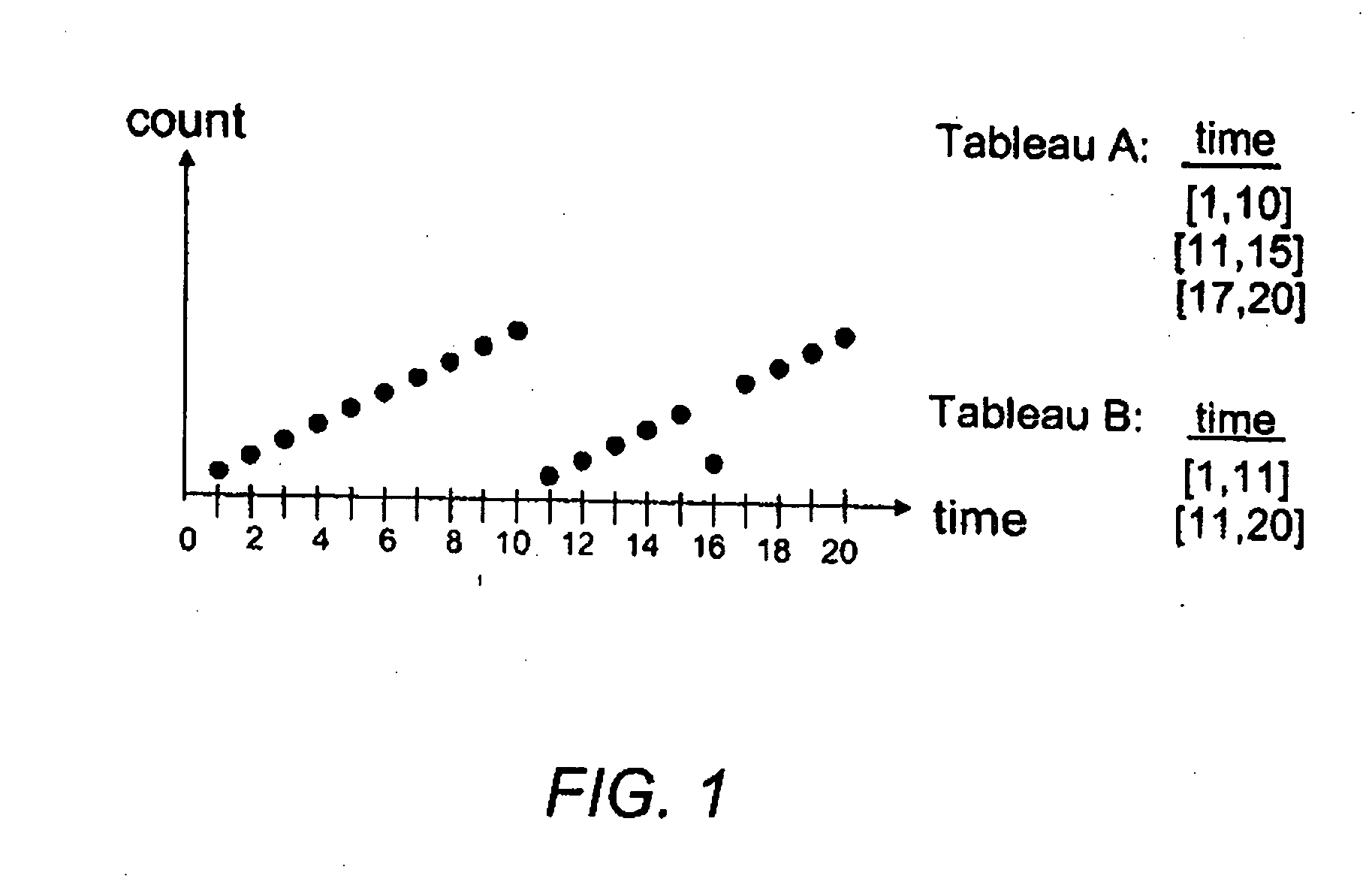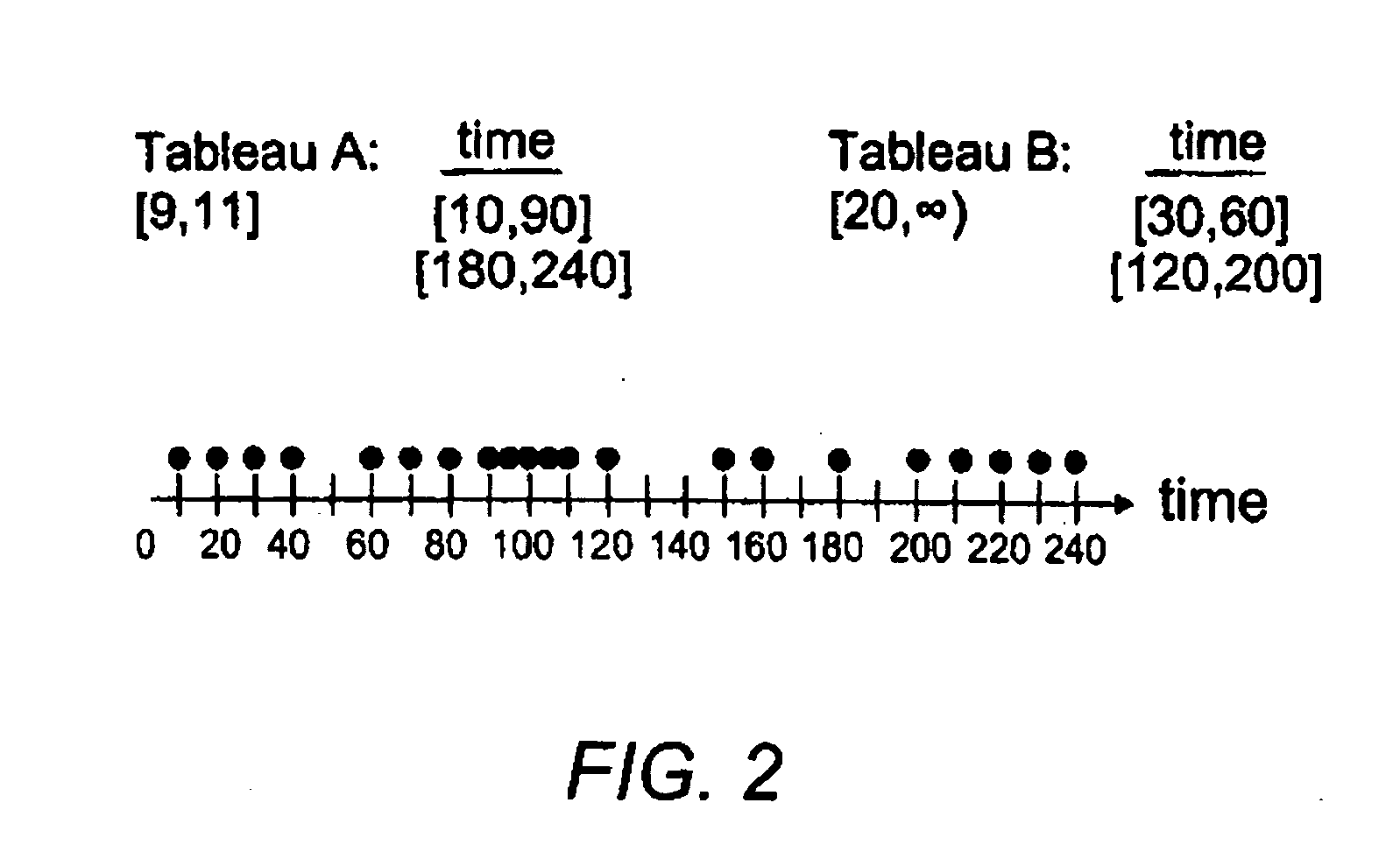Processing data using sequential dependencies
- Summary
- Abstract
- Description
- Claims
- Application Information
AI Technical Summary
Benefits of technology
Problems solved by technology
Method used
Image
Examples
Embodiment Construction
[0012]Interesting data sets often contain attributes with ordered domains: timestamps, sequence numbers, surrogate keys, measured values such as sales, temperature and stock prices, etc. Understanding the semantics of such data is an important practical problem, both for data quality assessment as well as knowledge discovery. However, integrity constraints such as functional and inclusion dependencies do not express any ordering properties. In this paper, we study sequential dependencies for ordered data and present a framework for discovering which subsets of the data obey a given sequential dependency.
[0013]Given an interval G, a sequential dependency (SD) on attributes X and Y, written as X→G Y, denotes that the distance between the Y-values of any two consecutive records, when sorted on X, are within G. SDs of the form X→(0,∞) Y and X→(−∞,0] Y specify that Y is strictly increasing and non-increasing, respectively, with X, and correspond to classical Order Dependencies (ODs). The...
PUM
 Login to View More
Login to View More Abstract
Description
Claims
Application Information
 Login to View More
Login to View More - R&D
- Intellectual Property
- Life Sciences
- Materials
- Tech Scout
- Unparalleled Data Quality
- Higher Quality Content
- 60% Fewer Hallucinations
Browse by: Latest US Patents, China's latest patents, Technical Efficacy Thesaurus, Application Domain, Technology Topic, Popular Technical Reports.
© 2025 PatSnap. All rights reserved.Legal|Privacy policy|Modern Slavery Act Transparency Statement|Sitemap|About US| Contact US: help@patsnap.com



